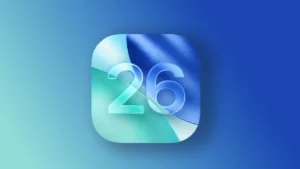After updating to iOS 26, it’s common to find your iPhone getting unusually hot and the battery draining much faster than normal. For many, this is a temporary annoyance, but for others, the problem persists for over a week, with the phone becoming so hot during simple tasks like taking pictures that it starts to lag, as detailed in this Apple Community discussion. This frustrating issue is typically caused by a combination of intensive background processes, software bugs in the new OS, and apps that have not yet been fully optimized.
In this article:
ToggleWhy Your iPhone Overheats and Drains Battery After an Update
A major software update forces your iPhone to perform a significant amount of work behind the scenes. The system re-indexes all of your files for Spotlight search, scans your photo library for new features, and recalibrates the battery. These processes are highly demanding on the processor, which generates excess heat and consumes a large amount of power.
While this initial “settling in” period is normal, persistent overheating and battery drain can be caused by bugs in the iOS 26 software or by third-party apps that are not yet optimized for the new operating system. A poorly optimized app can get stuck in a loop or use system resources inefficiently, causing your phone’s processor to run constantly, which drains the battery and generates heat.
How to Fix iOS 26 Battery Drain and Overheating
These solutions are ordered from the simplest to the most involved. It’s best to try them in sequence, as the issue is often resolved with the first few steps.
1. Wait (But Be Patient)
For most users, these issues resolve on their own after the iPhone finishes its background tasks. While this typically takes 24-72 hours, some users report it can take up to a week.
- Leave your iPhone plugged into a charger and connected to Wi-Fi overnight.
- Allow several days for the system to fully optimize.
- Avoid processor-intensive tasks like gaming or recording 4K video during this initial period if possible.
2. Update to the Latest iOS Version
Apple frequently releases small follow-up updates (like iOS 26.0.1) that contain crucial bug fixes for performance and battery issues.
- Go to Settings > General > Software Update.
- If a newer version of iOS is available, tap Download and Install.
3. Update All Your Apps
Apps need to be updated by their developers to run efficiently on a new operating system. An outdated app is a common cause of battery drain and overheating.
- Open the App Store.
- Tap your profile icon in the top-right corner.
- Tap Update All to ensure all your apps are optimized for iOS 26.
4. Identify Power-Hungry Apps
iOS can show you exactly which apps are consuming the most battery, helping you pinpoint a specific problem.
- Go to Settings > Battery.
- Scroll down to the list of apps sorted by battery usage.
- If an app you don’t use often is at the top of the list, it may be malfunctioning. Consider uninstalling it or checking for an update.
5. Force Restart Your iPhone
A force restart can clear out minor software glitches and runaway processes that may be causing the device to overheat.
- Press and quickly release the Volume Up button.
- Press and quickly release the Volume Down button.
- Press and hold the Side button until the Apple logo appears, then release it.
6. Limit Background Activity
Many apps refresh their content in the background, which consumes battery and processing power. Limiting this can provide an immediate improvement.
- Go to Settings > General > Background App Refresh.
- Either turn the feature Off entirely or disable it for individual apps that don’t need to be constantly updated.
- Also, go to Settings > Privacy & Security > Location Services and set apps to While Using instead of Always.
7. Remove the Case Temporarily
Phone cases, especially thick ones, can trap heat. If your iPhone feels hot to the touch, removing the case will help it dissipate heat more effectively.
8. Adjust Display Settings
The screen is one of the biggest power consumers on your iPhone.
- Go to Settings > Display & Brightness.
- Lower the brightness or enable Auto-Brightness.
- If your iPhone has an Always-On display, consider turning it off to save significant battery life.
9. Reset All Settings
This step can resolve deeper software conflicts without erasing your personal data. It will reset things like Wi-Fi passwords, wallpaper, and privacy settings to their defaults.
- Go to Settings > General > Transfer or Reset iPhone.
- Tap Reset > Reset All Settings.
- Enter your passcode to confirm.
If none of these solutions work, contact Apple Support for further diagnostics.


